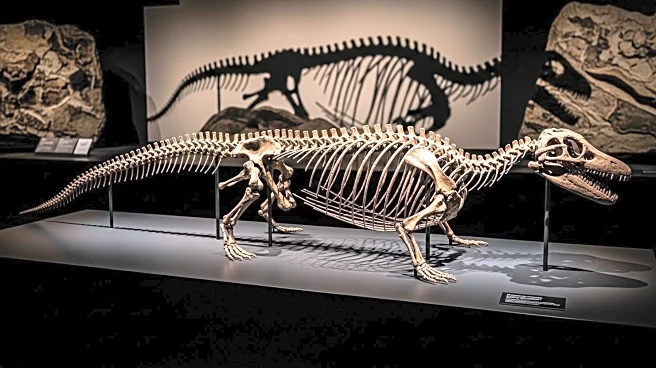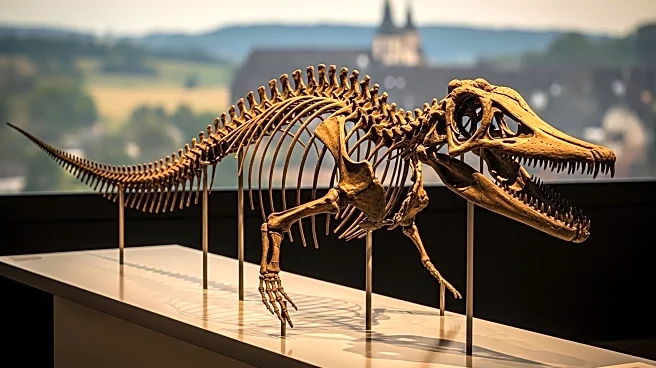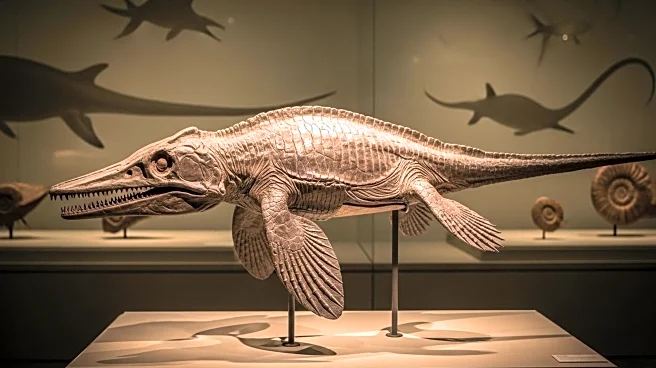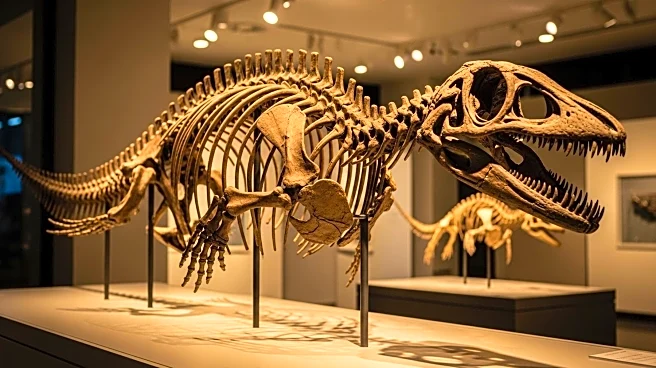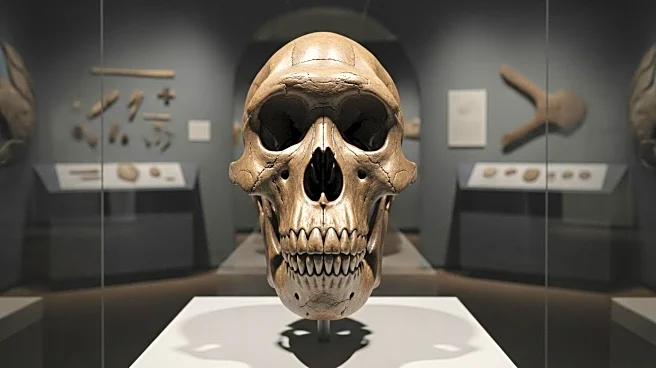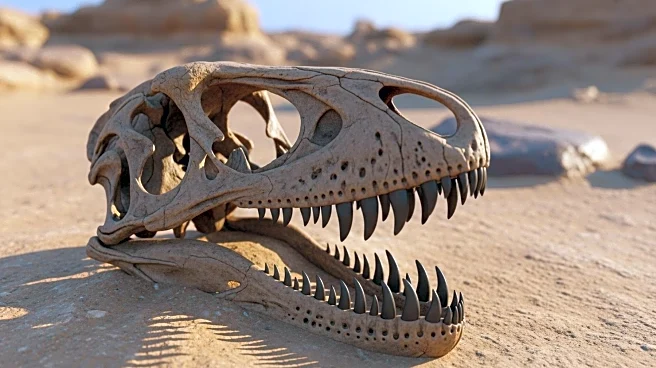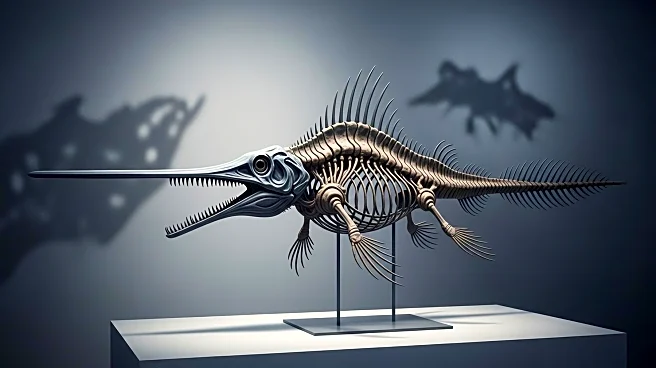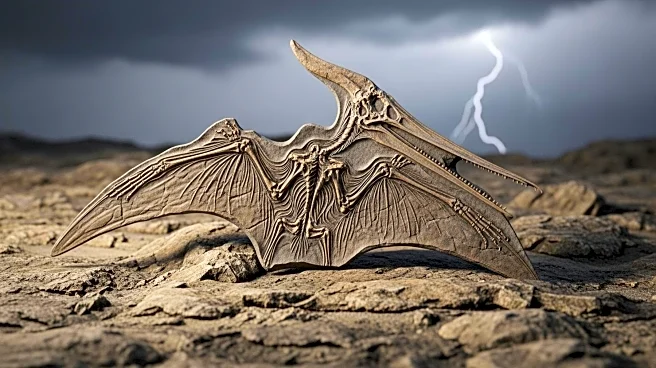What is the story about?
What's Happening?
A recent study published in Nature has introduced Breugnathair elgolensis, a Jurassic-era reptile with a unique combination of features resembling both snakes and lizards. Initially discovered in 2015, the fossil was thought to belong to separate animals due to its unusual characteristics. However, advanced imaging techniques have allowed researchers to reconstruct the creature, revealing it as a member of the Parviraptoridae group, known for its enigmatic fossil records. This discovery challenges previous assumptions about the evolutionary pathways of snakes, suggesting that snake-like features may have evolved independently in different reptilian lineages.
Why It's Important?
The reclassification of Breugnathair elgolensis provides new insights into the evolutionary history of snakes, a topic that has long puzzled scientists. By identifying this creature as a genuine parviraptorid, researchers can better understand the diversity and adaptability of ancient reptiles. This finding could lead to a reevaluation of the evolutionary timeline and relationships among squamates, the order that includes lizards and snakes. The study highlights the complexity of evolutionary processes and the potential for unexpected discoveries in paleontology, which could influence future research directions and our understanding of reptilian evolution.
AI Generated Content
Do you find this article useful?
